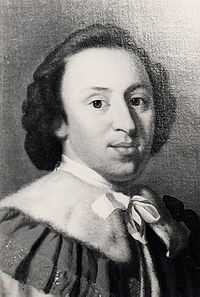Earl of Belvedere
The title Earl of Belvedere (alternative spelling: Earl of Belvidere) was created in 1756 in the Peerage of Ireland. The associated titles were Baron Bellfield (1737) and Viscount Bellfield (1751). All the titles became extinct in 1814.
Detailed history of the title and holders
The earldom of Belvedere, created in 1756, was held by the Rochfort family The 1st Earl of Belvedere was Colonel Robert Rochfort (1708–1774) who came from a distinguished English family settled in Ireland. In 1738 Rochfort had been created Baron Belfield and in 1751 was elevated to Viscount Belfield before he finally received the new earldom. He went on to become Muster-Master-General of the British Army in Ireland in 1764.
The 1st Earl and his unfortunate marriage

Despite the apparent talents, or popularity at court, which led to his fairly rapid rise, Rochfort is probably best known (even notorious) for the treatment of his young wife Mary, whom he married in 1736 when he was 28 and she 16. Around 1743, he heard rumours that Mary had been unfaithful to him with his brother Arthur. As punishment, Robert had her locked up in the family house at Gaulstown, alone apart from her servants, for the rest of his life (thirty-one years). After twelve years of this captivity she had attempted to escape, but was caught and subjected to even harsher treatment. When she was finally released by order of her son after his father's death, she apparently took to wandering the house and talking to portraits as if they were real people. Her voice had assumed a peculiar quality (like a shrill whisper) and she was obviously profoundly damaged by her experience. She did not survive long after her release.
She was not the only one to suffer though, as Robert took his brother Arthur to court and was awarded the then huge sum of £2,000 in damages. Arthur, unable to pay, fled the country, but on his return to Ireland he was thrown into the Marshalsea debtors' prison in Dublin, where he died.
During his life the 1st Earl commissioned Belvedere House, thought to be designed by Richard Castles but James Gibbs is most likely to have been the architect. It is still an admired piece of Georgian architecture and is now run by the Westmeath County Council. Robert's achievement with Belvedere House could be considered marred by his spitefulness however, as he had a 180 ft tall 'folly' built, purely to obscure the view to the house for his brother George.
The 2nd and last Earl
George Augustus Rochfort, Robert's second son, who had been named after King George III (his godfather by proxy) became the Second Earl of Belvedere in 1774 and despite the family holding vast estates in Westmeath chose to reside in Dublin; probably not surprising given the unhappy associations of his other holdings. He bought the land for his town house the year he succeeded to the Earldom, and also married Dorothea Bloomfield.
Politically active, George was a violent opponent of the Act of Union but was eventually wooed by money to vote in favour. He did nevertheless continue to reside in Dublin after the Act was passed. Following the death of his first wife he married Jane McKay and died in 1814.
His greatest legacy though is probably the town house he had built. He hired the well known architect Michael Stapleton to build it and it is one of the best surviving examples of Georgian architecture in Ireland.
The Rochfort family without Earldom
After the Earl's death his wife remarried and bore a son whom she christened George Augustus Rochfort Boyd. He chose to live on the estate in Westmeath, which had no unhappy associations for him, and the townhouse fell into disrepair. Boyd sold it to a man who then passed it on to his brother's religious order the Jesuits. The former Belvedere House, Dublin is now part of the renowned teaching establishment Belvedere College, school to the writers James Joyce and Austin Clarke, the stained glass artist Harry Clarke, the patriot and poet Joseph Plunkett who was executed in 1916, the poet Donagh MacDonagh, Volunteer Kevin Barry, and latter-day press and bean baron, Tony O'Reilly.
Upon George Augustus' death in 1814 the title became extinct and has yet to be revived. Although the title does not survive, the military tradition that saw the first Earl honoured for his services does seem to have lived on as, in 1915, one George Arthur Boyd-Rochfort, by then a true Irishman, was awarded the Victoria Cross (the UK's highest award for bravery) for service in France (Cambrin).
Earls of Belvedere (1756–1814)
- Robert Rochfort, 1st Earl of Belvedere (1708–1774)
- George Rochfort, 2nd Earl of Belvedere (1738–1814)
Additional Information
The village of Rochfortbridge in Westmeath was named after the grandfather of the 1st Earl of Belvedere – also Robert Rochfort – (1651–1727). Also related to Rochfort's who were landed Gentry in County Carlow, who left to start a new life in Broad Marston, near Stratford-upon-Avon, Warks,England in 1922.
External links
- The Howard Bury Papers (T/3069) (Public Record Office of Northern Ireland)
- Some history of Belvedere, County Westmeath
- History and Poetry of the Earl of Belvedere